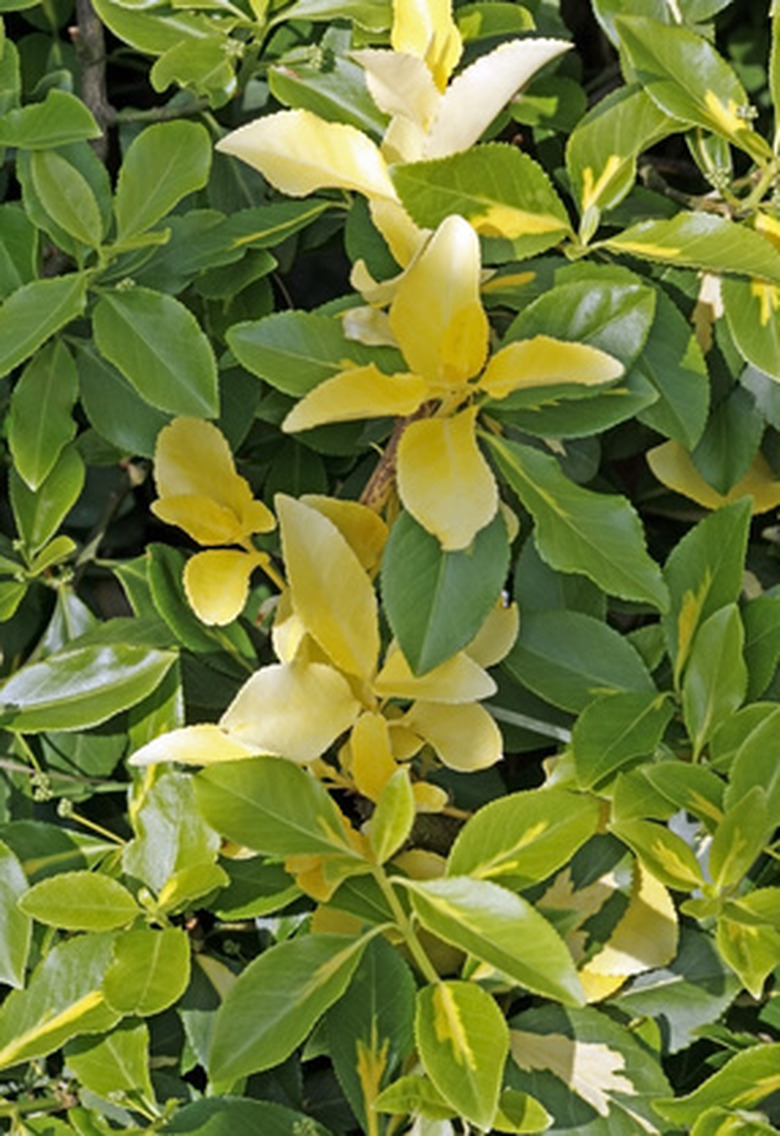How To Root An Euonymus Cutting
Things Needed
- Euonymus cutting
- Powdered rooting hormone
- Soilless planting mix
- Hand held pruning tool
- Wire
- Plastic bag
- 4-inch wide planting container
- Container of water
Euonymus is a species of plants grown as shrubs or vines in the United States. The most popular types of euonymus are shrubs with yellow variegated or red leaves. They grow to 6 feet tall or taller, and 5 to 6 feet wide under ideal growing conditions. Propagation of the euonymus shrub or vine from a growing tip is known as rooting, and you can root a section of a euonymus shrub to create a new plant.
Step 1
Take a cutting from a growing tip of the euonymus shrub in late spring with a hand held pruning tool. The cutting should be just beginning to become woody. This is known as a semi-hardwood cutting. A hard woody cutting is known as a hardwood cutting, and tender growth is known as a softwood cutting. Cut the semi-hardwood cutting from a branch tip to a length of 6 to 8 inches. Choose a branch tip that is not flowering. Immediately place the cutting into a container of water to keep it hydrated.
- Euonymus is a species of plants grown as shrubs or vines in the United States.
- Propagation of the euonymus shrub or vine from a growing tip is known as rooting, and you can root a section of a euonymus shrub to create a new plant.
Step 2
Add soilless potting mix into a flower pot that is 4 inches wide with drainage holes. A larger planting container will encourage mildew growth over the excess potting medium. Mildew will kill your euonymus cutting. Soak the potting medium thoroughly. Soilless potting mix is found in most nurseries and garden centers and is used specifically for rooting and starting seeds. It is sterile, holds moisture well and contains a small amount of fertilizer that cannot burn the tender roots of seedlings and cuttings.
Step 3
Take the euonymus cutting in one hand and clip off the bottom 2 inches with the pruning tool. Make sure the cutting is upright. Cut just below a leaf node or an area where a leaf is growing. Then, with your free hand, pull off the bottom leaves from the cutting using a downward motion that creates a small wound where the leaf was growing. Leave the top two or three leaves and the cluster of leaves at the top of the cutting.
- Add soilless potting mix into a flower pot that is 4 inches wide with drainage holes.
- Then, with your free hand, pull off the bottom leaves from the cutting using a downward motion that creates a small wound where the leaf was growing.
Step 4
Dip the entire bottom half of the cutting in the powdered rooting hormone, covering the cut end and all the wounds left when you removed the bottom leaves. Push your finger into the potting mix to create a hole for the cutting and place the cutting in the hole without scraping off the powdered rooting hormone. Gently push the potting medium around the cutting with your fingers so it has contact with the lower portion of the cutting and the cutting remains upright. Add a little water around the cutting to settle the potting mixture around the cutting.
Step 5
Make a small wire frame over the pot and place a clear plastic bag over the wire so the cutting and pot is covered and the humidity level remains high around the cutting. Don't allow the plastic bag to have contact with the cutting.
Place in a warm bright location, but not in direct sun. Keep the potting mixture around the cutting moist. Don't allow the foliage on the stem to get wet while adding water or it will mildew. The cutting should begin to root and actively grow in about eight weeks.
- Dip the entire bottom half of the cutting in the powdered rooting hormone, covering the cut end and all the wounds left when you removed the bottom leaves.
- Push your finger into the potting mix to create a hole for the cutting and place the cutting in the hole without scraping off the powdered rooting hormone.
Tip
If mildew begins to form around the cutting while you are waiting for it to root, dispose of the cutting and potting mix, wash the container with soap and hot water and start over.
